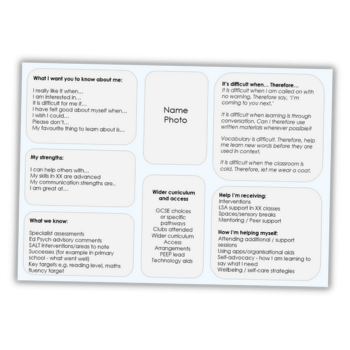Wellbeing in schools – What is it and how can we support it?

We need to think more deeply about we actually mean by ‘wellbeing’ and what schools can do to support it, suggests Barry Mansfield

- by Barry Mansfield
- Director of Halcyon London International School

For a near-ubiquitous topic of conversation, there’s a surprising lack of agreement as to what wellbeing in schools actually means and how we can cultivate it.
Not that this stops the internet from weighing in, of course. A quick Google search produces ‘5 steps to wellbeing’, eight levels, 10 domains and a triangle, to name just a few.
This talk of wellbeing ‘steps’, ‘levels’ and ‘domains’ might seem helpfully clear and concise at first. However, such approaches can prove to be distinctly mechanical and medical in practice. They often stem from the conflation of ‘wellbeing’ with ‘mental health’.
This is what can lead some to commission a new bolt-on practice, buy a new system or training course, enlist personnel or build a whole new ‘wellness suite’.
This kind of activity lets us add a patina of wellbeing to our daily routines. But will it really provide the answer?
Effects, not causes
In schools, the focus can often be on ameliorating effects, rather than tackling causes. Of course, we need to put out the fire before we try banning matches. Wellbeing is so broad, so complex and so contingent on different factors it seems almost impossible to argue that schools should be capable of addressing root causes.
However, it’s also true that schools are systems – and as such, can be unresponsive, mechanical and detrimental to our wellbeing. They may also operate with cultures or values that enable inequitable or exclusive exercises of power. So if we’re to find our ‘answer’, we need to first check that our own houses are in order.
When Halcyon London International School was founded 10 years ago, we did just that. Our starting point was that wellbeing is about feeling safe, happy and secure, with all of us able to fulfil our unique potential as a result. This led to us approaching education in a way that ensures the whole individual feels understood, trusted and respected.
A consistent sense of meaning and purpose in all we do defines our culture of wellbeing. Underpinning this is a commitment to promoting autonomy and agency among our students; developing our sense of belonging as a community of learners; our sense of emotional, social, intellectual and physical security; and our sense of competence and achievement.
We enable this by creating a culture that nurtures such opportunities. This, by definition, excludes cultures built on hierarchy, obedience, power and compulsion. It also shuns learning approaches where you plan that some will fail.
Values over rules
In practice, implementing this approach has entailed investing in cognitive coaching training for all staff. We’ve also provided timetabled space in which trained coaches can work with students.
We actively demonstrate trust and confidence in our students, while helping them learn how to self-regulate, problem-solve and utilise the agency we give them.
This has meant removing arcane systems of ‘consequences’ that often shade into ‘punishment’. Instead, we’ve invested in restorative practice training to rebuild relationships and trust. Teachers understand how to use structured conversations to build students’ ability to reflect on wrongs, and take ownership of making them right.
It has also meant abandoning ‘rules’ that require enforcement and communicate power. Instead, we’ve placed our trust in values that support the mediation of problems and help young people better understand civic and political processes. For this to work, every classroom must be culturally responsive, allowing everyone to feel recognised and that they belong there.
Engagement and belonging
What we do for students we also do for staff – investing in training and development, removing internal hierarchies and promoting collaborative practice and innovation.
None of this is easy. But we all know that we learn better when we feel engaged. And you can’t be engaged if you feel you don’t belong, or that your education doesn’t have meaning.
We shouldn’t treat wellbeing services as an extra. We need to build wellbeing into the fabric of every routine, every classroom and every decision.
We’re privileged in having the resources to adopt this approach. We’re aware of the exceptional work schools across the education sector do in circumstances much more challenging than ours. If this innovative and collaborative approach to education is to become more embedded across our system, then we need those leading our country to invest in education and allow innovation.
Barry Mansfield is the Director of Halcyon London International School – a non-profit school in Marylebone for ages 11-18 that follows the International Baccalaureate curriculum







